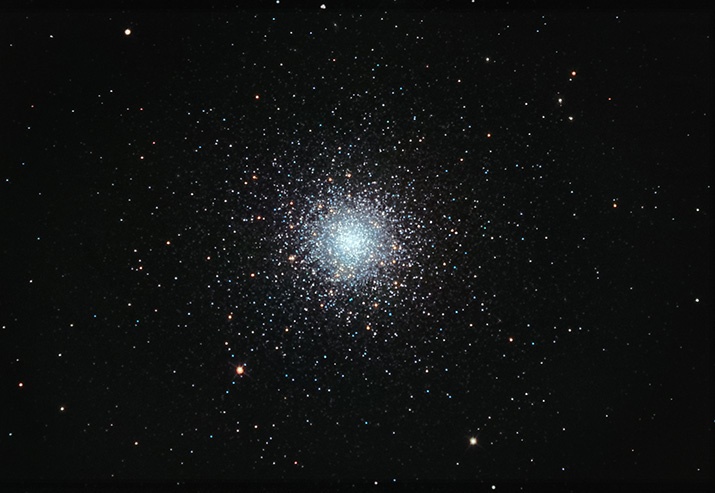
|
Date: 04/22/2013 Location: Denton, TX Telescope: ATRC12 - Mount: MI-250 - Camera: ST-10XME Exposure: L = 48 min. (Binned 1X1) - R = 15 min - G = 12 min. - B = 15 min. (Binned 2 X 2) Click on the image to view at higher resolution. |

| Discovered 1764 by Charles Messier. M3 is one of the most outstanding globular clusters, containing an estimated half million stars. At a distance of about 33,900 light years, it is further away than the center of our Galaxy, the Milky Way, but still shines at magnitude 6.2. Its absolute magnitude is about -8.93 which equates to a luminosity of about 300,000 times that of our sun. M3 is thus visible to the naked eye under very good conditions - and a superb object with the slightest optical aid. Its apparent diameter of 16.2 arc minutes corresponds to a linear extension of about 160 light years. The cluster's brightest stars are of mag 12.7, while the so-called Horizontal Branch giants are of mag 15.7, and the 25 brightest stars have an average brightness of 14.23 mag. Sandage (1954) counted 44,500 stars brighter than mag 22. The total mass has been estimated at 245,000 solar masses (Sandage and Johnson). Helen Sawyer Hogg has given M3's overall spectral type as F2, and a color index -0.05, rather blue for a globular, while the Sky Catalogue 2000.0 gives its spectral type at F7. This stellar swarm is approaching us at 148.5 km/sec. |